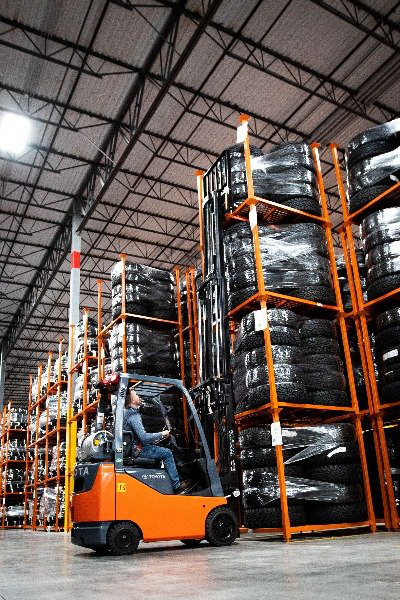Forklift safety should always be the forefront of your business. Here are few best practices that can be used to foster forklift safety on the job:

1. Train your employees for Safety
OSHA estimates that 96 US workers were killed in forklift related accidents in 2015 and more than 97,000 injuries occur annually.
A commitment to safety begins with proper training. Would you put an untrained driver behind the wheel of a car? Why would you do it with a forklift?
OSHA requires that all forklift operators successfully complete a formal training program, which may include lectures, written materials, practical training, and workplace performance evaluation.
2. Perform Forklift Checkups Daily
Forklift operators are urged to inspect forklifts before each job, starting with items that can be checked without the engine running. Checks should include tires, lights, horn, brakes, alarms, fluid levels, tires, mast chains, and forks.
3. Know each machine you are going operate
An operator should know the mechanics of the forklift being utilized. Different machines respond differently. Some factors that may impact performance: size of the truck, weight and/or carrying height of the load, travel speeds, and turning radius. Of course, the operator should always wear the seat belt. Neglecting to do so can cause the operator to be ejected from the cab if the truck tips over, resulting in possible injury or fatality.
They should also be aware of the surroundings in their work area. It is important that drivers be aware of, and make eye contact with, pedestrians or other workers during operations. OSHA best practices for maintaining visibility include:
- Keep an unobstructed view of the area and product
- Always look in the direction of travel
- Use spotters or aids such as rear-view mirrors to boost visibility
- Use headlights if working at night, outdoors, or in areas where additional lighting would improve visibility.
4. Understand the three-point suspension triangle
Lift trucks are built on three-point suspension systems, with support points at both ends of the front axles and the other located at the center of the rear axle.
A load has its own center of gravity. Once it’s picked up, a combined center of gravity between the load and the truck is established. Several factors can create an unsafe lifting environment, including heavy or wide loads, fast starts and stops, turning corners at too high a speed, and uneven terrain.
5. Reinforce forklift basics
It is recommended that operators check loads before picking them up with the forks. Confirming the load’s stability and dimensions should allow for safe transport. Then, maintain basic safety procedures to ensure a safe experience:
- Move squarely in front of the load
- Do not overload and ensure load is centered
- Slightly tilt the forklift mast backward before lifting
- OSHA recommends lifting the load above the lower stack by about 4 inches
- When placing a load, operators should be squarely in front of the placement destination.
- Lower the forks to place the load and then back the forklift away.
A little prevention can go a long way in keeping your employees, your forklifts, and your products safe. The steps you and your team take every day can prevent costly accidents and lost productivity.
